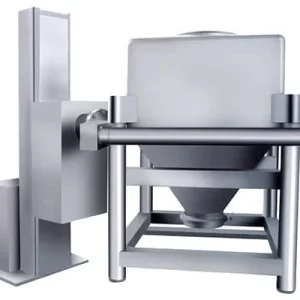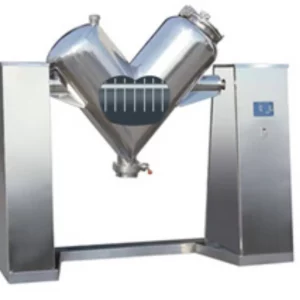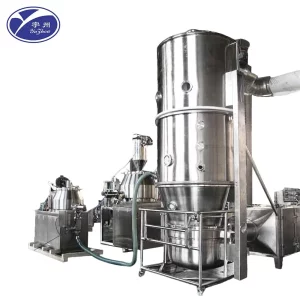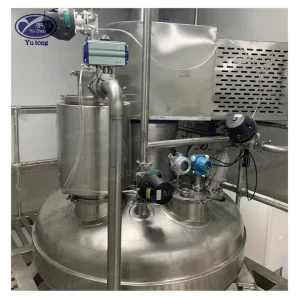When it comes to industrial drying processes, the fluidized bed dryer stands out as an efficient and versatile choice. This technology offers numerous advantages, including uniform drying and energy efficiency, making it a preferred option across various industries. If you’re in the market for one, understanding the pricing landscape is crucial. In this comprehensive guide, we will explore everything you need to know about fluidized bed dryer prices, including factors influencing costs, typical price ranges, and tips for making an informed purchase.
What is a Fluidized Bed Dryer?
A fluidized bed dryer is a type of equipment used in various industries to dry particulate materials. This process involves suspending solid particles in a stream of hot air, creating a fluidized state that allows for even and efficient drying. This technology is widely used in pharmaceuticals, food processing, chemical industries, and more due to its ability to handle heat-sensitive materials without compromising quality.
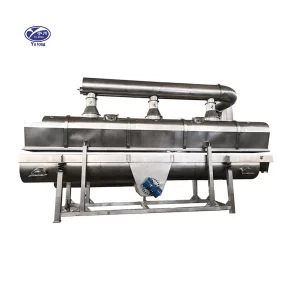
How Fluidized Bed Dryers Work
Fluidized bed dryers operate by blowing hot air through a perforated plate, causing the solid particles to become suspended in the air stream. This fluidization ensures that each particle is evenly exposed to the drying air, leading to uniform moisture removal. The fluidized state also allows for rapid heat and mass transfer, making the drying process more efficient compared to other methods.
Applications Across Industries
Fluidized bed dryers are versatile and can be found in various industries. In the pharmaceutical industry, they are used for drying granules and powders, ensuring consistent product quality. In food processing, they help maintain nutritional value while achieving desired moisture levels. The chemical industry utilizes fluidized bed dryers for drying bulk chemicals and catalysts, benefiting from the controlled drying environment.
Advantages Over Traditional Drying Methods
Compared to traditional drying methods, fluidized bed dryers offer several advantages. They provide faster drying times due to enhanced heat and mass transfer, reducing operational costs. Their ability to handle heat-sensitive materials without degradation makes them ideal for industries with stringent quality requirements. Additionally, the fluidized state minimizes the risk of material caking or sticking, ensuring smooth operation.
Factors Influencing Fluidized Bed Dryer Prices
Understanding what affects the cost of a fluidized bed dryer can help you make a more informed purchase. Several key factors come into play when determining the price of these machines.
1. Size and Capacity
The size and capacity of a fluidized bed dryer are primary determinants of its price. Larger units that handle more material will naturally cost more than smaller, less capacious models. When considering size, think about your production needs both now and in the future. It’s essential to balance current requirements with potential growth to avoid the need for costly upgrades down the line.
Considerations for Different Scales
For small-scale operations, compact units offer affordability and space efficiency, making them ideal for laboratories or pilot plants. Medium-scale units cater to moderate production needs, providing a balance between cost and capacity. Large-scale dryers, while more expensive, offer economies of scale for extensive industrial operations, making them a long-term investment for high-volume production.
2. Material and Build Quality
The materials used in constructing the dryer play a significant role in its pricing. Stainless steel models, for instance, are more expensive than those made from other metals due to their durability and resistance to corrosion. This is crucial for maintaining hygiene standards in industries like pharmaceuticals and food processing, where contamination risks must be minimized.
Impact of Material Choice
Choosing the right material for your fluidized bed dryer is vital for ensuring longevity and performance. Stainless steel, while costlier, provides superior resistance to wear and corrosion, making it suitable for harsh environments. Alternatively, models made from aluminum or other metals may offer cost savings but could require more frequent maintenance and replacement.
3. Additional Features
Some fluidized bed dryers come with additional features such as advanced control systems, energy-saving technologies, or specialized drying modes. While these features can increase the initial cost, they often provide long-term savings and efficiency, making them a worthwhile investment. Advanced controls allow for precise temperature and humidity adjustments, optimizing the drying process.
Evaluating Feature Benefits
When considering additional features, evaluate their potential benefits for your operation. Energy-saving technologies can significantly reduce operational costs, providing a quick return on investment. Specialized drying modes offer flexibility for processing different materials, enhancing the versatility of the dryer. These features can lead to improved product quality and reduced waste, justifying the higher upfront cost.
4. Brand and Manufacturer Reputation
Brands with a strong reputation for quality and reliability may charge higher prices. However, investing in a reputable brand can offer peace of mind, knowing that you are purchasing a product that is durable and backed by solid customer support. Reputable manufacturers often provide comprehensive warranties and excellent after-sales service, ensuring smooth operation and minimal downtime.
Importance of Brand Research
Conducting thorough research on brands and manufacturers is crucial before making a purchase. Look for customer reviews and testimonials to gauge product performance and reliability. Established brands with a proven track record often invest in research and development, offering innovative features and technologies that enhance the drying process. Prioritizing brand reputation can prevent costly repairs and ensure a longer lifespan for your equipment.
Typical Price Range for Fluidized Bed Dryers
Fluidized bed dryers can vary greatly in price depending on the factors mentioned above. However, here is a general idea of what you might expect when considering different scales of operation.
Small-Scale Units
For small operations or laboratory settings, prices can start from $5,000 to $20,000. These units are designed for low-volume production, offering basic functionality and compact design. They are ideal for research and development or pilot testing, providing an affordable solution for small-scale drying needs.
Entry-Level Options
Entry-level small-scale units are often equipped with essential features, focusing on reliability and ease of use. They may lack advanced controls, but they offer sufficient performance for simple applications. These units are perfect for startups or facilities with limited space, providing a cost-effective introduction to fluidized bed drying technology.
Medium-Scale Units
Mid-range models suitable for moderate industrial use typically range from $20,000 to $100,000. These units offer a balance between cost and functionality, providing advanced features and higher capacity for increased production needs. They are ideal for growing businesses looking to expand their operations without a significant financial burden.
Features of Mid-Range Models
Medium-scale units often include features such as programmable controls and energy-efficient designs. These enhancements improve operational efficiency and allow for greater customization of the drying process. Such models are well-suited for industries with moderate production demands, offering scalability and flexibility for future growth.
Large-Scale Units
High-capacity dryers for extensive industrial applications can cost anywhere from $100,000 to $500,000 or more. These units are designed for large-scale production, offering robust build quality and cutting-edge technology to handle demanding environments. The investment in a large-scale unit is justified by the economies of scale and enhanced production capabilities it provides.
Advantages of Investing in High-Capacity Dryers
Large-scale fluidized bed dryers offer significant advantages for industrial operations. Their high throughput capacity and advanced features ensure consistent product quality and reduced processing times. Additionally, the durability and reliability of these units minimize downtime, maximizing productivity and profitability. For industries with high-volume drying needs, the upfront investment is offset by long-term operational savings and increased output.
How to Choose the Right Fluidized Bed Dryer
Choosing the right fluidized bed dryer requires careful consideration of various factors. Taking the time to assess your needs and evaluate available options will ensure you make an informed decision that aligns with your production goals.
Assess Your Needs
The first step in choosing a fluidized bed dryer is to assess your specific needs. Consider the volume of material you need to process, the sensitivity of the materials, and the space available for the equipment. Understanding your requirements will help you identify the most suitable dryer model for your operation.
Evaluating Production Requirements
Begin by analyzing your current and future production needs. Determine the average batch size and frequency of use to estimate the required capacity. Consider any special requirements for handling heat-sensitive or fragile materials, as these will influence the choice of features and technology. By aligning your needs with available models, you can select a dryer that meets your specific production demands.
Evaluate Energy Efficiency
Energy efficiency is an important factor when considering operational costs. Look for models with energy-saving features or those that have been rated for high efficiency. This consideration can save you money on energy bills in the long run, reducing the overall cost of ownership.
Long-Term Cost Savings
Investing in an energy-efficient fluidized bed dryer provides long-term cost benefits. Models with advanced energy-saving technologies reduce power consumption, leading to significant savings on utility bills. Additionally, energy-efficient dryers often qualify for tax incentives or rebates, further enhancing their financial attractiveness. Prioritizing energy efficiency not only lowers operating costs but also supports sustainability initiatives.
Consider Maintenance and Support
When investing in a fluidized bed dryer, consider the maintenance requirements and the availability of support from the manufacturer. A model that is easy to maintain and backed by good customer support can save you time and money on repairs and downtime. Reliable support ensures that any issues are promptly addressed, minimizing disruptions to your production process.
Importance of After-Sales Service
Comprehensive after-sales service is crucial for ensuring the longevity and performance of your fluidized bed dryer. Look for manufacturers that offer extensive service packages, including routine maintenance, spare parts availability, and technical support. A well-maintained dryer operates more efficiently and reduces the risk of unexpected breakdowns, ensuring continuous production and maximizing return on investment.
Request Quotes and Compare
Before making a decision, request quotes from multiple suppliers to compare prices and features. This step will help ensure that you get the best value for your investment. Comparing quotes allows you to evaluate different models, features, and pricing options, enabling you to make an informed choice.
Negotiating the Best Deal
Negotiating with suppliers can lead to cost savings and favorable terms. Be prepared to discuss your specific requirements and budget constraints to explore potential discounts or package deals. Suppliers may offer additional incentives, such as extended warranties or free installation, to secure your business. By taking a strategic approach to negotiation, you can achieve a competitive price without compromising on quality or features.
Real-World Example: Pricing from Leading Manufacturers
To give you a clearer picture, let’s look at pricing from some leading manufacturers in the industry. These examples illustrate the diversity in pricing and features you may encounter when shopping for a fluidized bed dryer.
Manufacturer A
- Model X100: A small-scale unit priced at $15,000, suitable for laboratory use with basic functionality. This model offers a compact design and user-friendly controls, making it ideal for research and development applications.
- Model X200: A medium-scale unit priced at $50,000, offering advanced control features and energy-efficient design. This model includes programmable settings and enhanced safety features, providing reliable performance for moderate industrial use.
Key Features of Manufacturer A’s Models
Manufacturer A focuses on delivering cost-effective solutions without compromising on quality. Their small-scale unit, Model X100, is designed for ease of use and quick setup, catering to laboratories or pilot plants. The medium-scale Model X200 incorporates energy-saving technologies, reducing operational costs while maintaining high drying efficiency. Both models are backed by comprehensive customer support, ensuring smooth operation and minimal downtime.
Manufacturer B
- Model B300: A large-scale industrial dryer priced at $150,000, known for its robust build and high capacity. This model is designed for demanding industrial environments, offering exceptional durability and reliability.
- Model B400: Priced at $250,000, this model includes cutting-edge technology for precise drying control and increased efficiency. It features an intuitive interface and customizable drying modes, providing flexibility for various applications.
Advantages of Manufacturer B’s Offerings
Manufacturer B specializes in high-capacity dryers that deliver superior performance for extensive industrial operations. The Model B300 is engineered for heavy-duty use, with reinforced construction and advanced safety features. Meanwhile, the Model B400 incorporates state-of-the-art technology, allowing for precise control and optimization of the drying process. Both models offer excellent scalability and are supported by a dedicated service team, ensuring maximum uptime and productivity.
Final Thoughts
Purchasing a fluidized bed dryer is a significant investment, but understanding the factors that affect its cost can help you make an informed decision. Consider your specific needs, budget, and the potential long-term benefits of advanced features. By doing your research and comparing options, you can find a dryer that meets your requirements and offers excellent value for money.
Importance of Informed Decision-Making
Making an informed decision involves evaluating all relevant factors, from price and features to brand reputation and support. Understanding the intricacies of fluidized bed dryer pricing ensures that you choose a model that aligns with your production goals and budget constraints. By prioritizing quality and efficiency, you can enhance your production capabilities and achieve a higher return on investment.
Maximizing the Value of Your Investment
To maximize the value of your investment, focus on long-term benefits such as energy efficiency, scalability, and ease of maintenance. Selecting a dryer with advanced features and reliable support can lead to operational savings and improved productivity. By carefully evaluating your options and negotiating the best deal, you can secure a fluidized bed dryer that enhances your production capabilities and fits within your budget.
In conclusion, fluidized bed dryers are a versatile and efficient option for industrial drying needs. By carefully evaluating the price list and considering all relevant factors, you can make a purchase that enhances your production capabilities and fits within your budget. With the right research and strategic decision-making, you can find a fluidized bed dryer that delivers excellent performance and long-term value.

